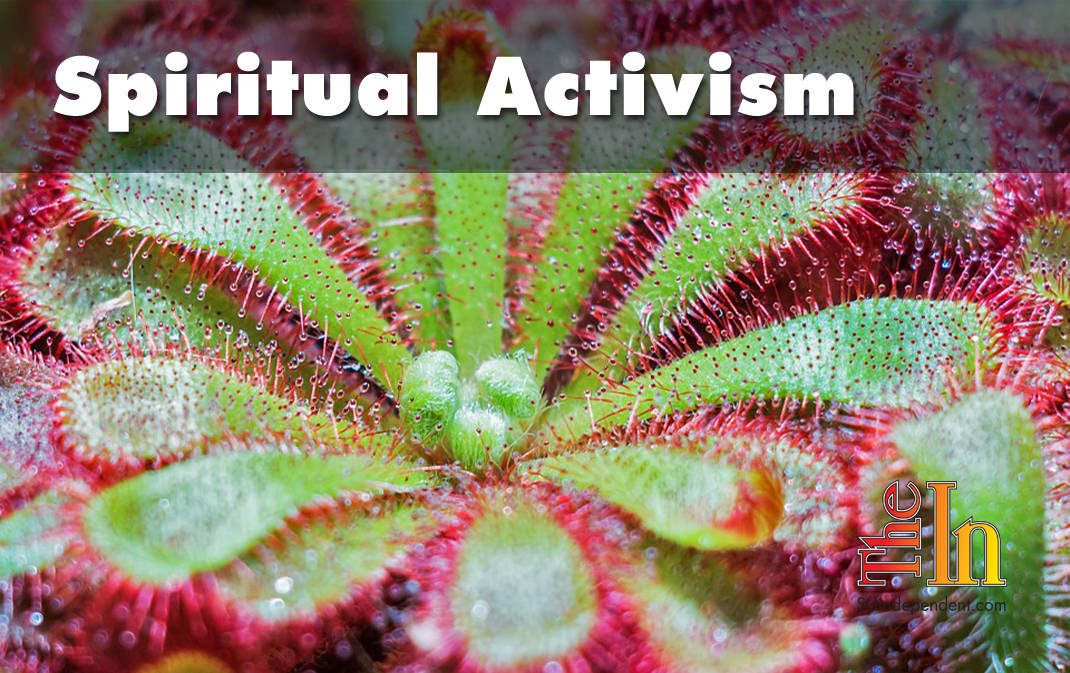 By Carmella Fitzpatrick
By Carmella Fitzpatrick
As a result of our recent annual celebration of Earth Day, I find myself wanting to express how sensitive plants that surround us on a day to day basis are. Earth Day was established in 1969 and has done wonders in opening awareness to our environment and our need to contribute to its improvement, such as planting more trees since they produce the oxygen we breathe. A tree also provides a home for creatures who live in a tree or who depend on it for survival.
Plants are alive, conscious, feeling, moving, responsive, and reactive to their environment as well. I know this may sound a bit too New Agey, but research continues to verify the intelligence of plants. Here is in an article to check out in National Wildlife where author Janet Marinelli cites several recent reports to the contrary, including an old reference to Charles Darwin’s book “The Power of Movement in Plants.”
Frantisek Baluska at the University of Bonn has pushed further into the question of consciousness by suggesting that plants may even experience pain. They release the chemical ethylene when stressed — when being eaten, attacked, or cut. Even nearby plants sense this. Plants also produce the chemical in large quantities when their fruits are about to be eaten. A scientist has theorized that they’re using ethylene as an anesthetic (animals can be knocked out with ethylene).
Plants speak in a chemical vocabulary we can’t directly perceive. One of the most clever ways to speak of is the signaling that involves two insect species, the first in the role of pest and the second as its exterminator. Several species, including corn and lima beans, emit a chemical distress call when attacked by caterpillars. Parasitic wasps some distance away lock in on that scent, follow it to the afflicted plant, and proceed to slowly destroy the caterpillars. Scientists call these insects “plant bodyguards.”
As early as the 1920s, research at the Bose Institute showed that plants have a nervous system that reacts to stimuli. The stimuli that plants respond to include light, water, and gravity. Plants grow towards light. Flowers will follow the sun as it moves across the sky. Roots grow towards water. Also, roots grow towards the center of the earth.
Some plants like the Venus flytrap have taken a different route in supplying themselves by preying on animals, including everything from insects to mice and even birds. There are at least 600 species of animal-eating flora. In order to do this, these plants have evolved complex lures and rapid reactions to catch, hold, and devour animal prey. And so obviously, the Venus flytrap does not need timed photography to see it’s movement.
Charlie Collins, who had been a member of Unity Center of Positive Living, wrote a book for his wife of an experiment that he did that I would like to share with you to try. Decide on a plant. Have two of them in their own pot, and set them in different places. Talk to one in a loving complimentary manner everyday, and with the other one be angry and insulting, and watch what happens over time. This personal experiment should make a believer out of you and hopefully motivate you to pitch in and do something.
What I am getting at here is it is about time that we establish “plant rights” as any other establishment of rights. I am not saying this to make the vegans or the meat-eaters roll their eyes into an indignant start of retorts beyond belief. I am saying this because of a possible extinction crisis. I have already pointed out that insects assist plant life. Owls and other life forms do, too. Isn’t it time that we stop using insecticides in our rush to produce faster for commerce? I’m sure commerce could find side companies to produce to take care of itself for finances. Isn’t it time to let nature once again take care of itself? It has been that way for centuries. What gives us that right to change that now? Sixty-eight percent of evaluated plant species are threatened with extinction, and these are of only the known ones! There are many in rain forests that have not been discovered yet.
Noted conservation scientist David Wilcove estimates that there are 14,000 to 35,000 endangered species of flora and fauna in the United States.
Through photosynthesis, plants provide the oxygen we breathe and the food we eat and are the foundation of life on Earth. Unlike animals, plants can’t move as their habitat is destroyed, making them vulnerable to extinction. A study found that habitat destruction leads to an “extinction debt” whereby plants that appear dominant will disappear over time because they aren’t able to disperse to new habitat patches. Global warming only worsens this problem. Already, scientists say, warming temperatures are causing quick and dramatic changes in the range and distribution of plants around the world. With plants making up the backbone of ecosystems and the base of the food chain, that’s very bad news for all species, which depend on plants for food, shelter, and survival.
Unlike past extinctions caused by events like asteroid strikes, volcanic eruptions, and natural climate shifts, the current crisis is almost entirely being caused by us humans.
So for the love of life itself on planet Earth, please stop turning your heads to this harsh reality, start to participate in the survival of plants, shift your thinking on this enough to demand legislative actions, and to do your part in other ways as well. Thank you!



